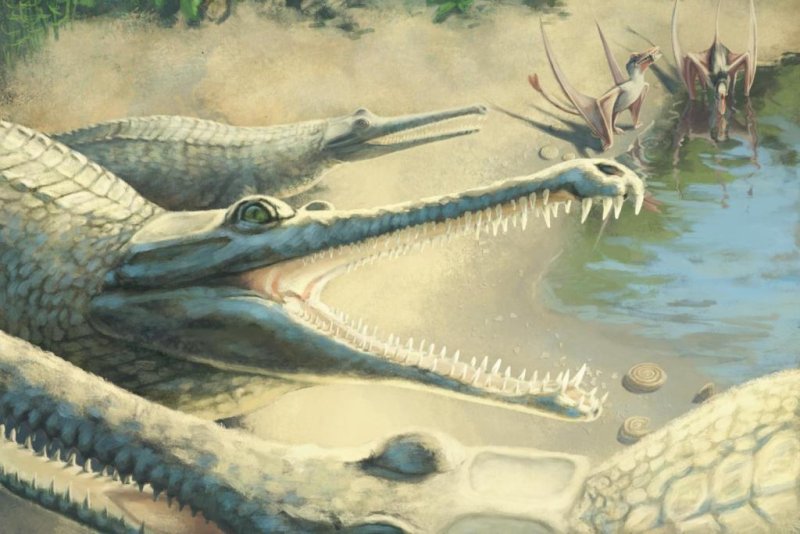An artistic illustration of the prehistoric crocodile. Photo by Julia Beier
Sept. 12 (UPI) -- More than 250 years after an ancient crocodile's skull was found in Germany, scientists have finally confirmed the identity of the fossil as the now-extinct species Mystriosaurus laurillardi.
The skull was first unearthed from a quarry in a Bavarian town in the 1770s by Johann Friedrich Bauder, the mayor of Altdorf, as well as a merchant and avid naturalist.
In 1834, the German naturalist Johann Jakob Kaup determined the crocodile was a member of the genus Mystriosaurus. But his conclusions were later dismissed as scientists questioned the legitimacy of the genus. Eventually, the genus was lumped into a related genus, Steneosaurus.
"During the latter half of the 20th century there was a trend towards taxonomic lumping, at both the genus and species levels," researchers wrote in a new paper published this week in the journal Acta Palaeontologica Polonica.
Since the 180-million-year-old skull was first found in Germany, scientists have found hundreds of fossils belonging to diverse group of crocodile species. With a more complete fossil record, scientists have been able to conduct phylogenetic analysis to identify evolutionary relationships among different groups of crocodiles.
In their reanalysis of the fossil and another specimen -- erroneously classified as belonging to the species Steneosaurus brevior -- scientists determined that both crocodiles belong to the speceis Mystriosaurus laurillardi and that Mystriosaurus "is a distinct and valid genus."
Researchers determined the marine predator could grow up to 13 feet in length. It boasted a long snout and pointed teeth, which it used to prey on fish and other small marine animals. The crocodiles shared the warm coastal seas of the Late and Middle Jurassic with other large marine reptiles like ichthyosaurs. Like modern saltwater crocodiles, Mystriosaurus laurillardi likely swam from island to island, warming their bodies on beaches and laying eggs in the sand.
Though scientists have solved the mystery of the German crocodile's identity, there is still plenty more phylogenetic analysis to do.
"Unraveling the complex history and anatomy of fossils like Mystriosaurus is necessary if we are to understand the diversification of crocodiles during the Jurassic," Mark Young, researcher at the University of Edinburgh, said in a news release. "Their rapid increase in biodiversity between 200 and 180 million years ago is still poorly understood."















